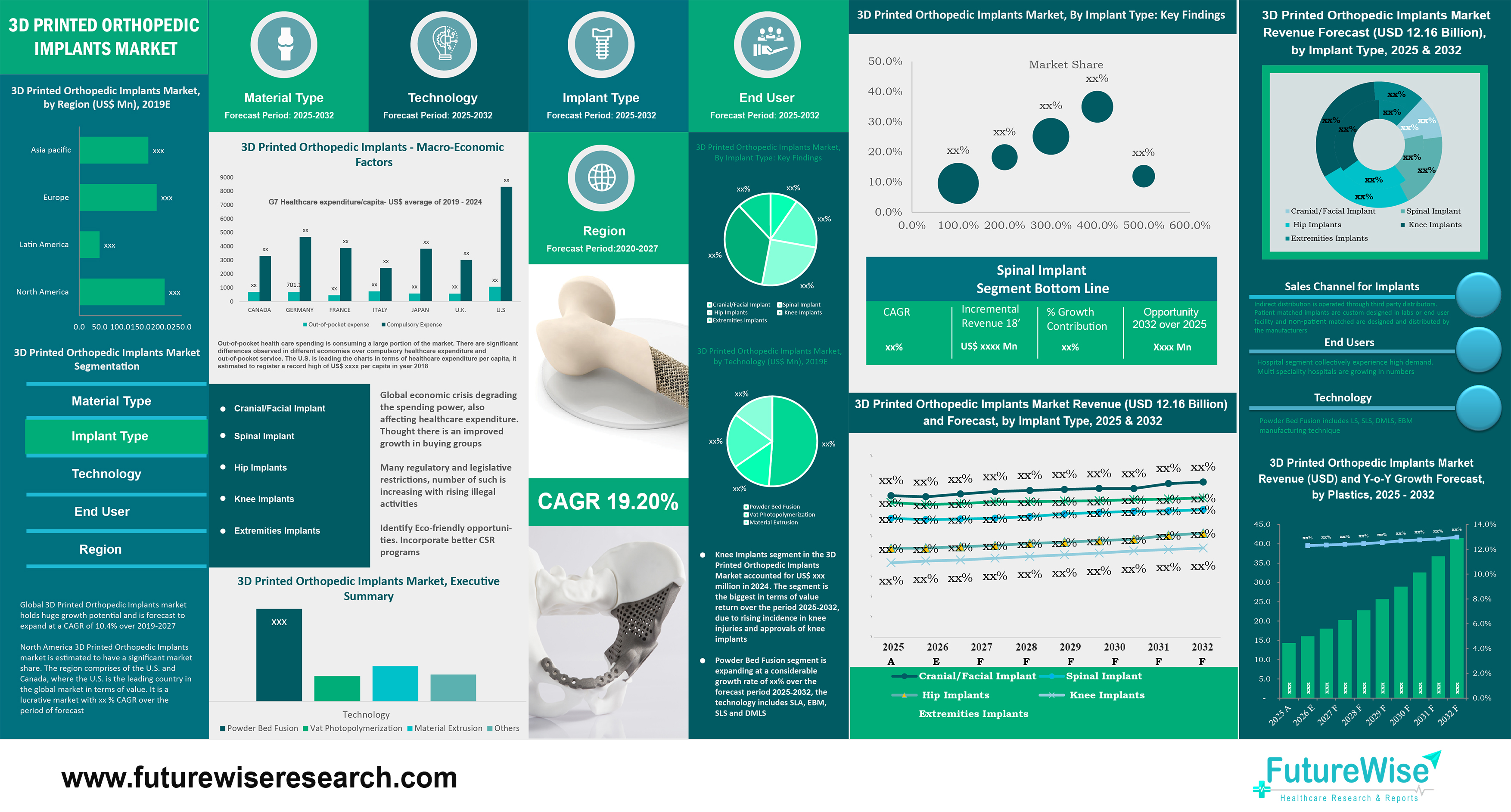According to FutureWise analysis, the 3D printed orthopedic implants market in 2023 was valued at US$2.98 billion and is expected to reach over US$12.16 billion by 2032, growing at a CAGR of 19.20%. The 3D Printed Orthopedic Implants Market is experiencing an exciting surge, driven by the increasing demand for personalized and patient-specific implants. Innovations in additive manufacturing technologies are transforming the landscape, while the rising incidence of orthopedic disorders adds to the momentum. Moreover, the expanding application of biocompatible materials and the revolutionary use of 3D printing in intricate bone reconstruction surgeries are propelling the market forward on a global scale. It's an exhilarating time for this field, as cutting-edge technology meets the urgent needs of patients and healthcare providers alike! The market is growing quickly because more people are using patient-specific implants. Advances in 3D printing technology and the rising number of orthopedic disorders are also contributing to this growth. There is a high demand for minimally invasive surgeries, and the improved biocompatibility of 3D printed materials is leading more hospitals and specialty clinics to adopt these implants worldwide.
3D printed orthopedic implants are revolutionizing the field of orthopedic medicine by providing customized, precise, and innovative solutions for patients with bone and joint ailments. These implants are created using additive manufacturing techniques, where a patient's specific anatomical data is transformed into a digital model, optimized for design and functionality. The 3D printer then fabricates the implant layer by layer using biocompatible materials such as metal alloys or polymers. Post-processing steps ensure the implant's quality, including the removal of support structures, surface finishing, and sterilization. The advantages of 3D printed orthopedic implants are numerous. They offer personalized customization, allowing for a perfect fit and improved patient outcomes. The ability to produce intricate geometries and internal structures enhances implant performance and functionality. Furthermore, 3D printing streamlines the manufacturing process, reduces costs, and opens doors to more accessible and tailored orthopedic solutions. With 3D printed orthopedic implants, patients can benefit from advanced technology that addresses their unique needs, promoting faster healing, improved mobility, and enhanced quality of life.

The integration of three-dimensional (3D) printing technology and biomedical science has shown tremendous promise and continues to gain interest in the field of orthopedics. One significant application is the creation of 3D-printed anatomical models, which are increasingly used in preoperative planning. These models provide surgeons with a tangible and accurate representation of a patient's unique anatomy, allowing for better visualization and strategizing before the actual surgery takes place. This helps improve surgical outcomes and reduces the risk of complications.
FutureWise Market Research has published a report that provides an insightful analysis of 3D Printed Orthopaedic Implants Market trends that are affecting the overall market growth. This report will provide a detailed analysis of market share, regional insights, and competitor analysis that includes stature of key manufacturers operational in this industry. According to the analysis conducted by FutureWise research analysts, the 3D Printed Orthopaedic Implants Market is estimated to register a considerable growth rate over the forecast period. This report lists the market segments and potential prospects available across this industry, in addition providing crucial information on the total valuation currently held by the industry. Moreover, this report will assist key management individuals in an organisation to enhance their decisions pertaining to business expansion as well as strategic changes for increasing customer base.